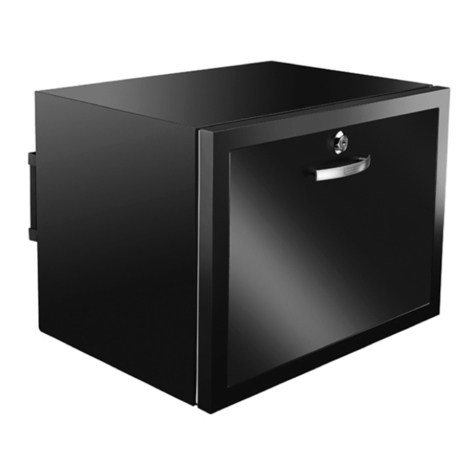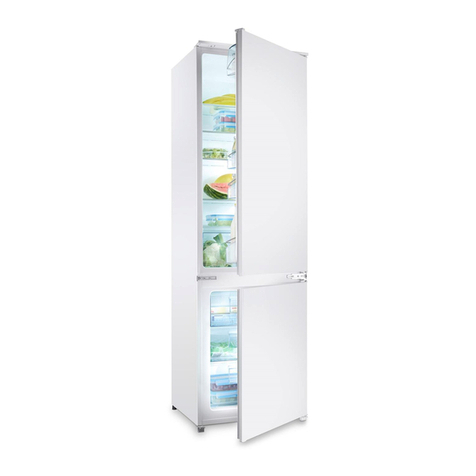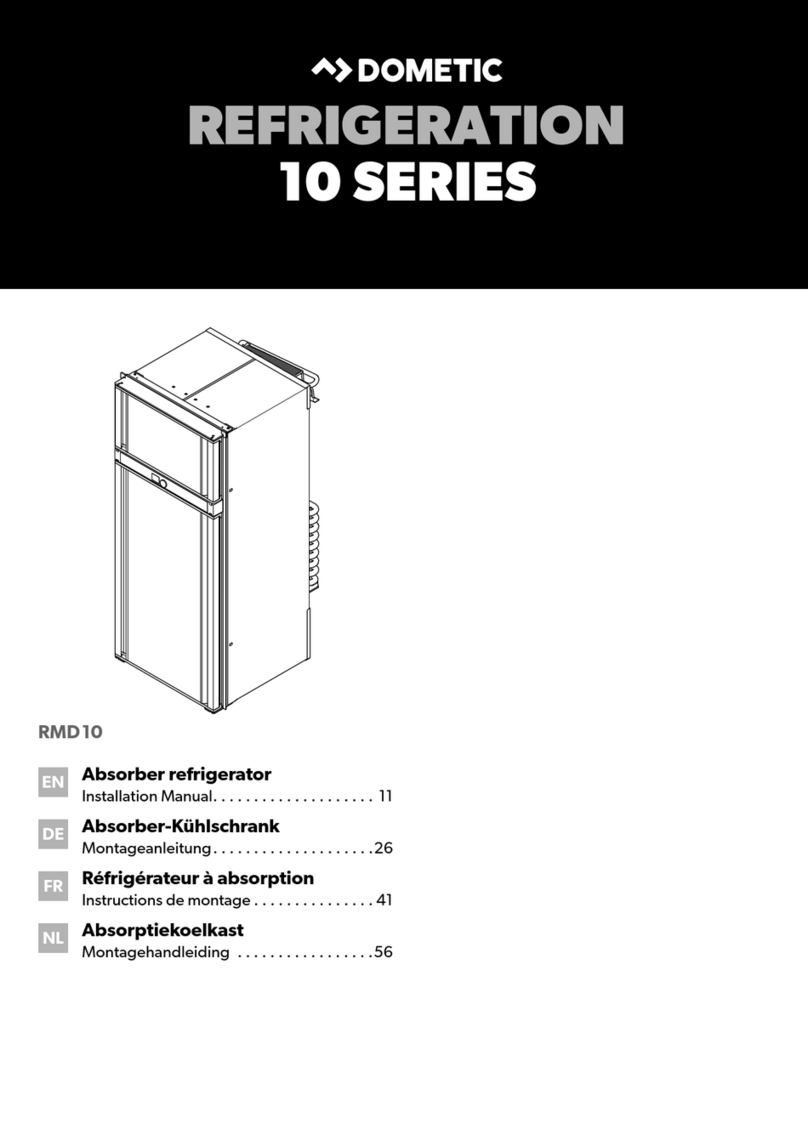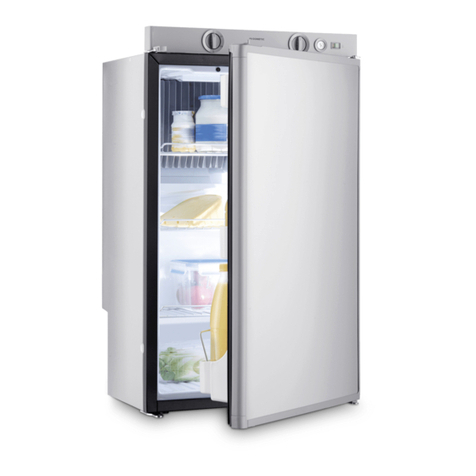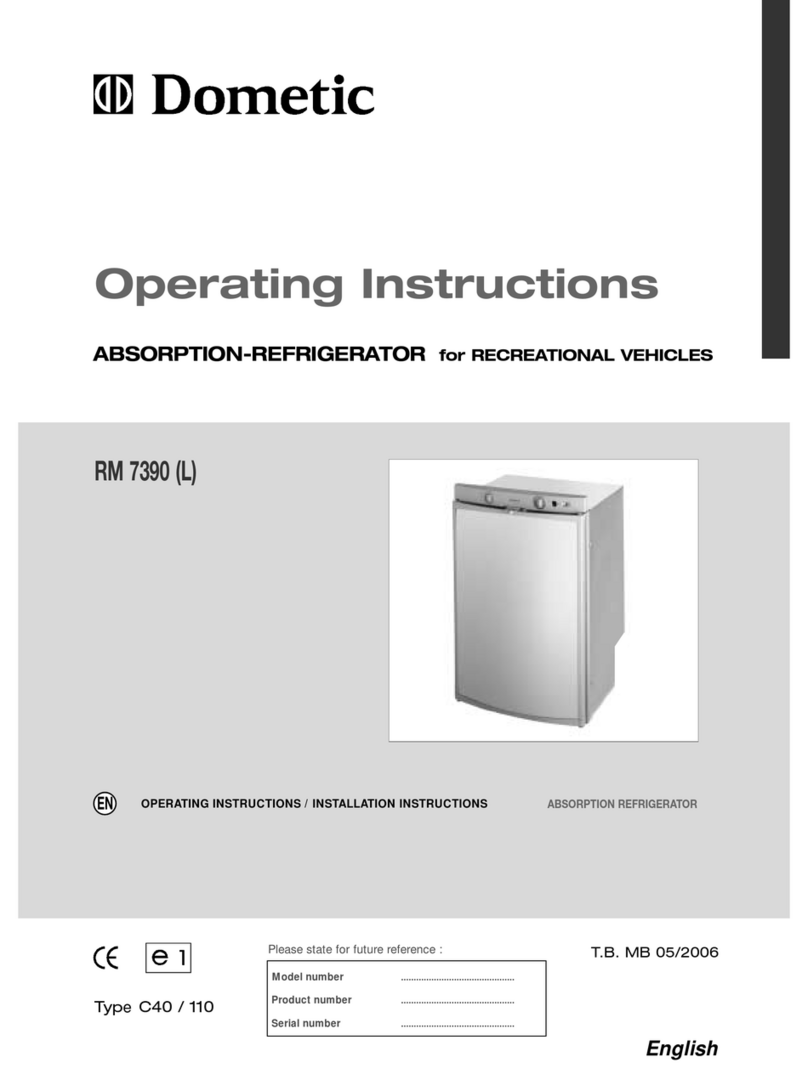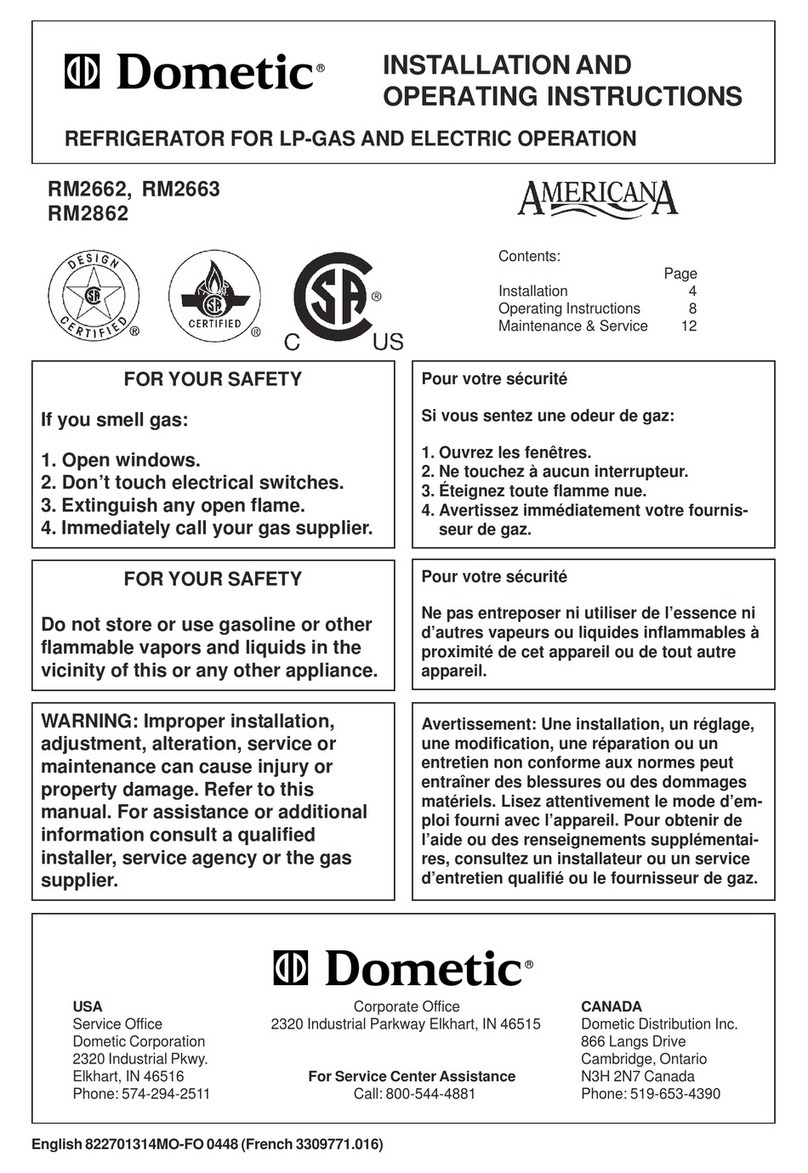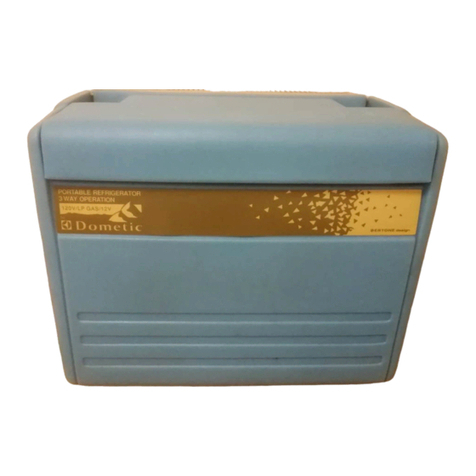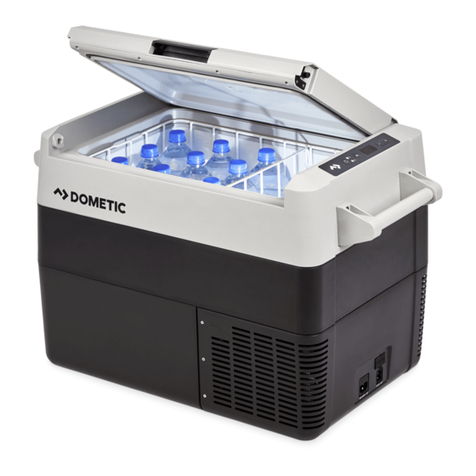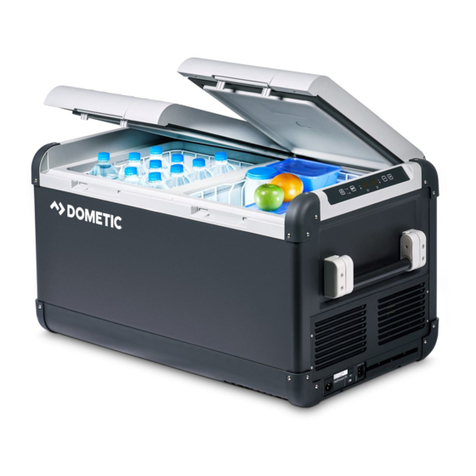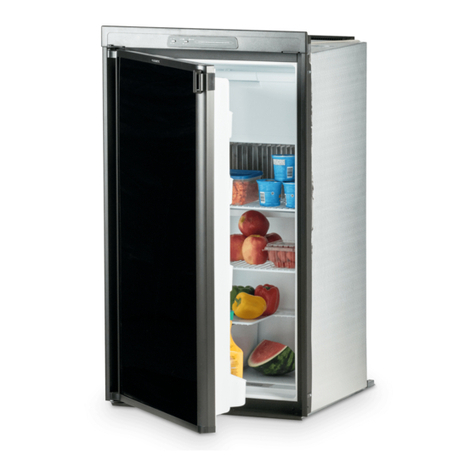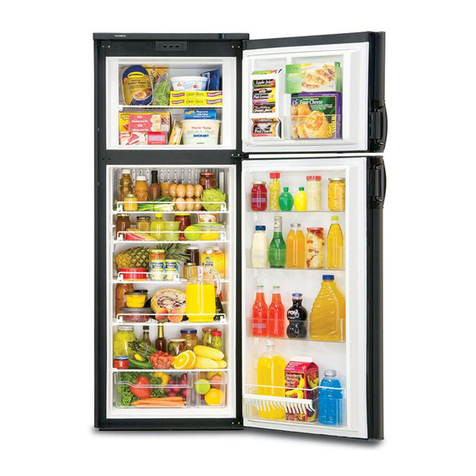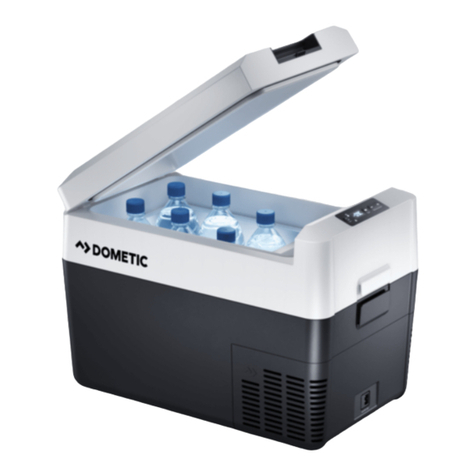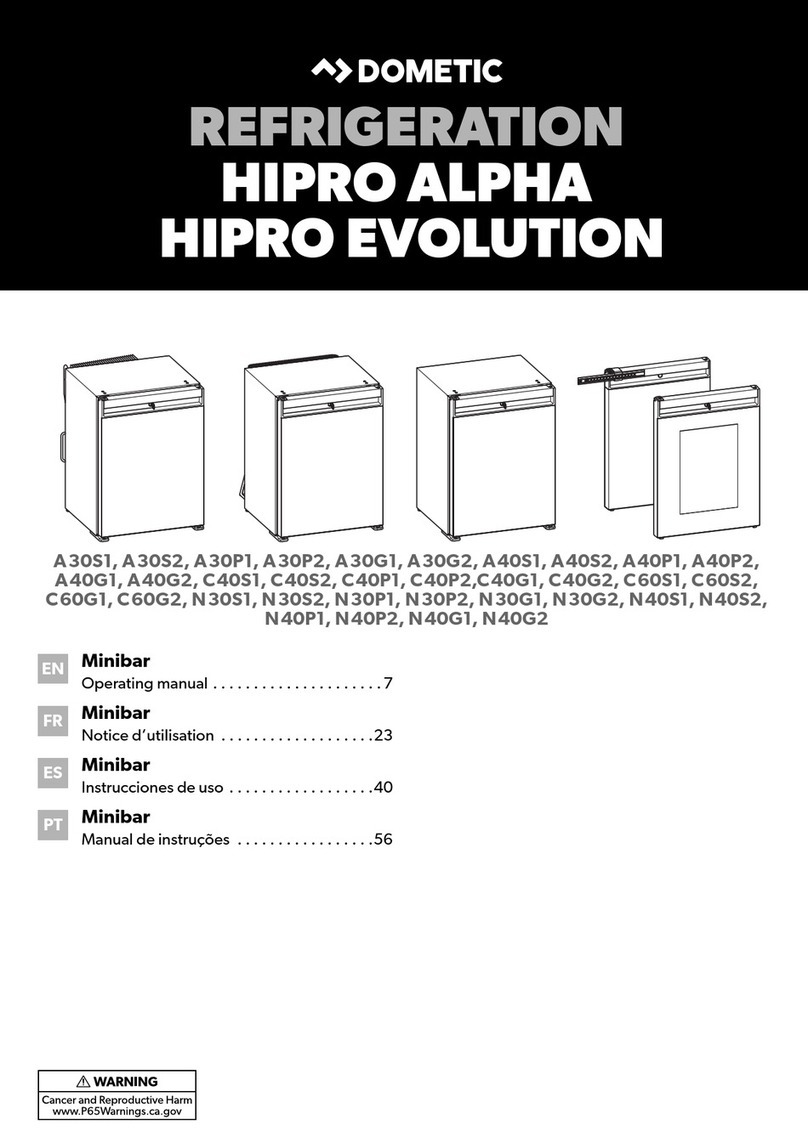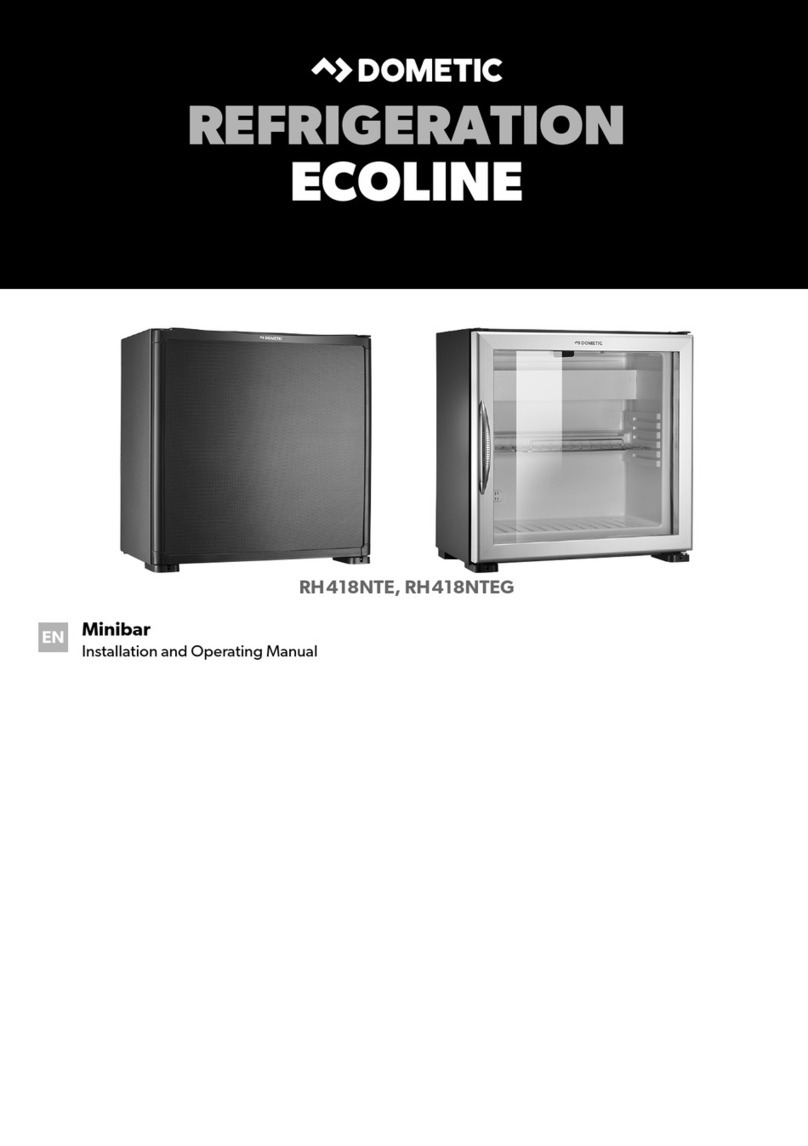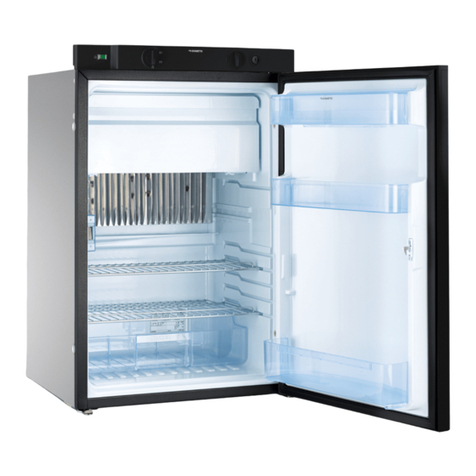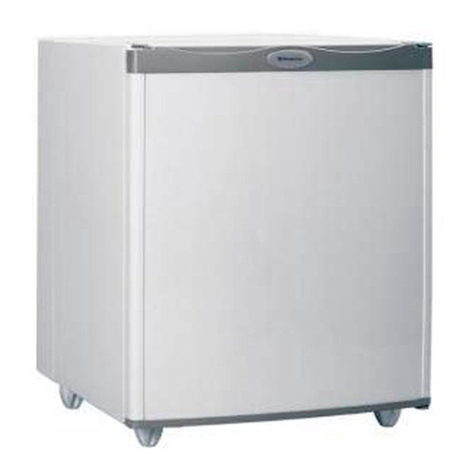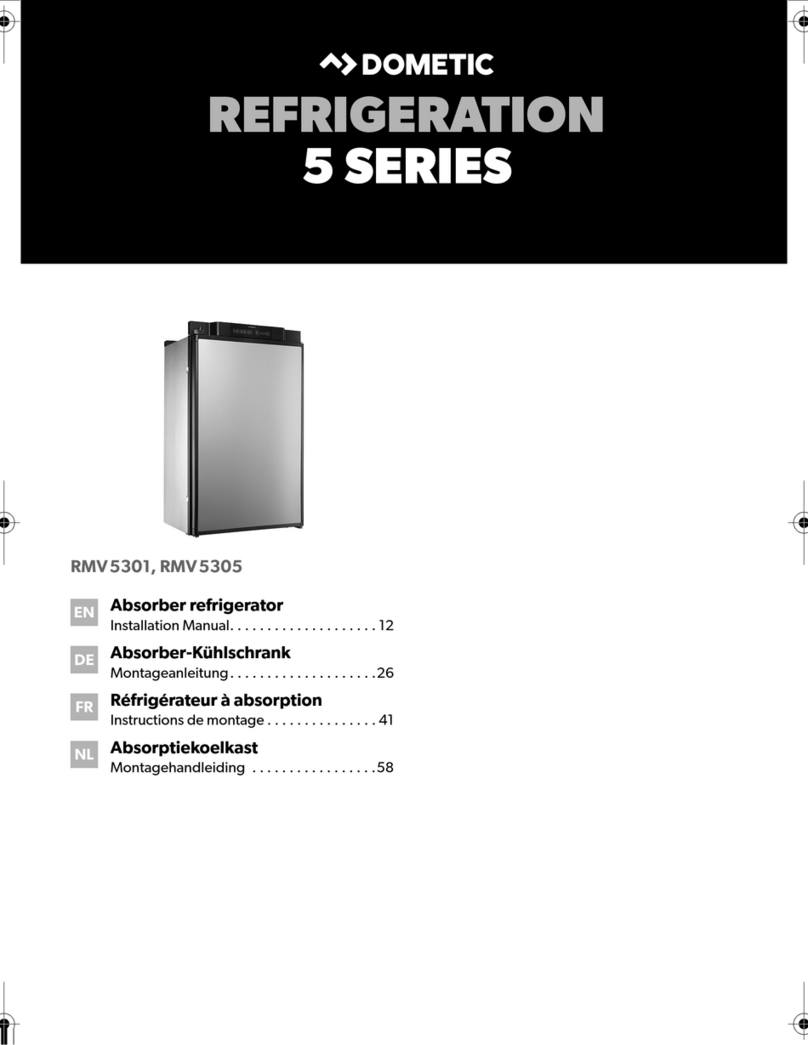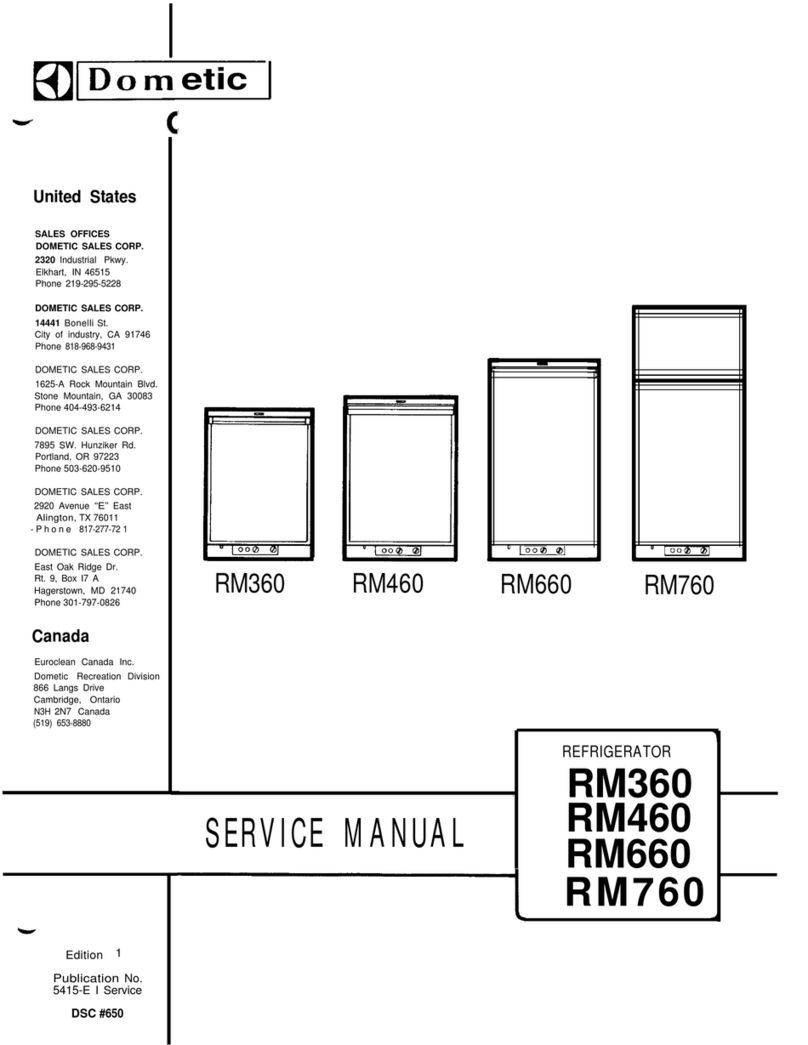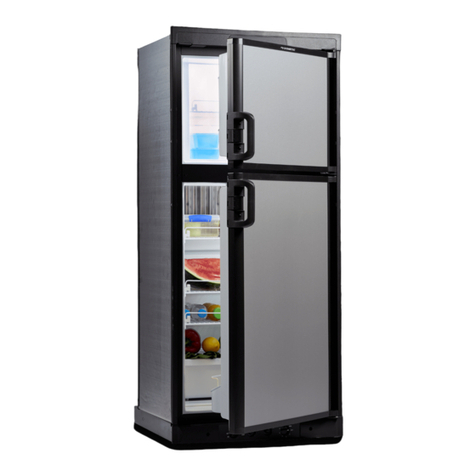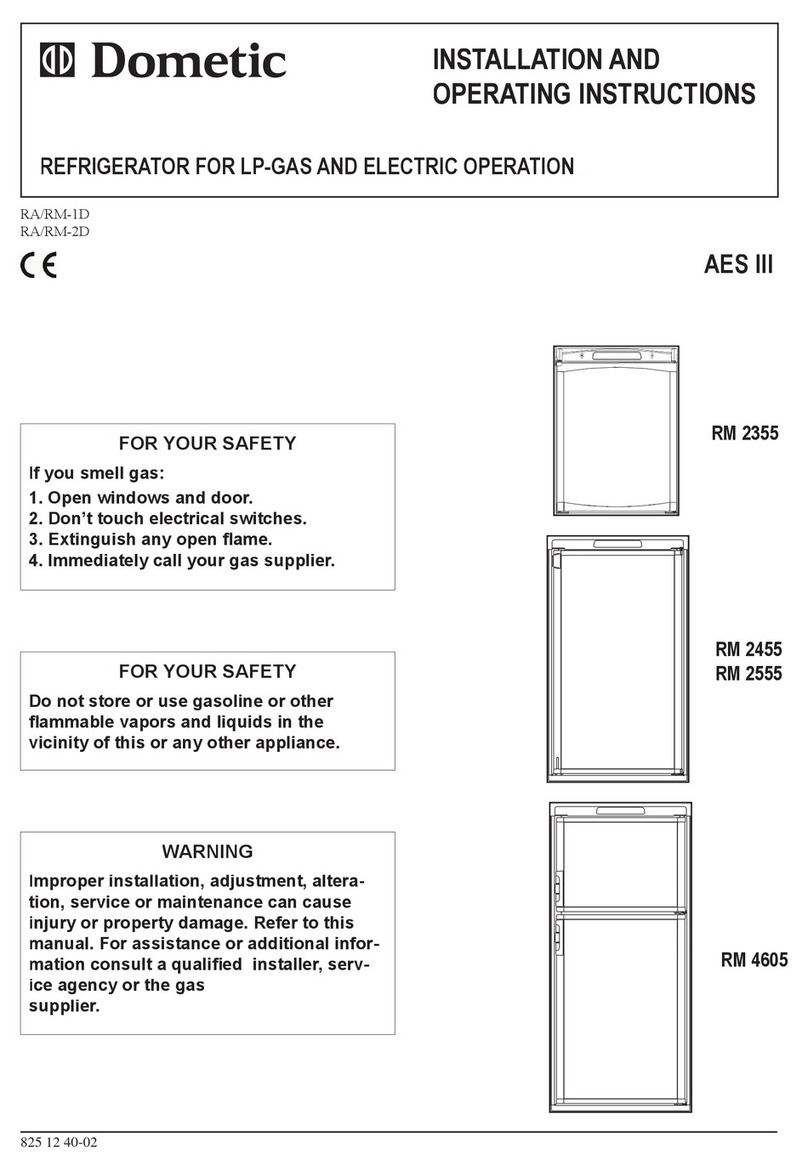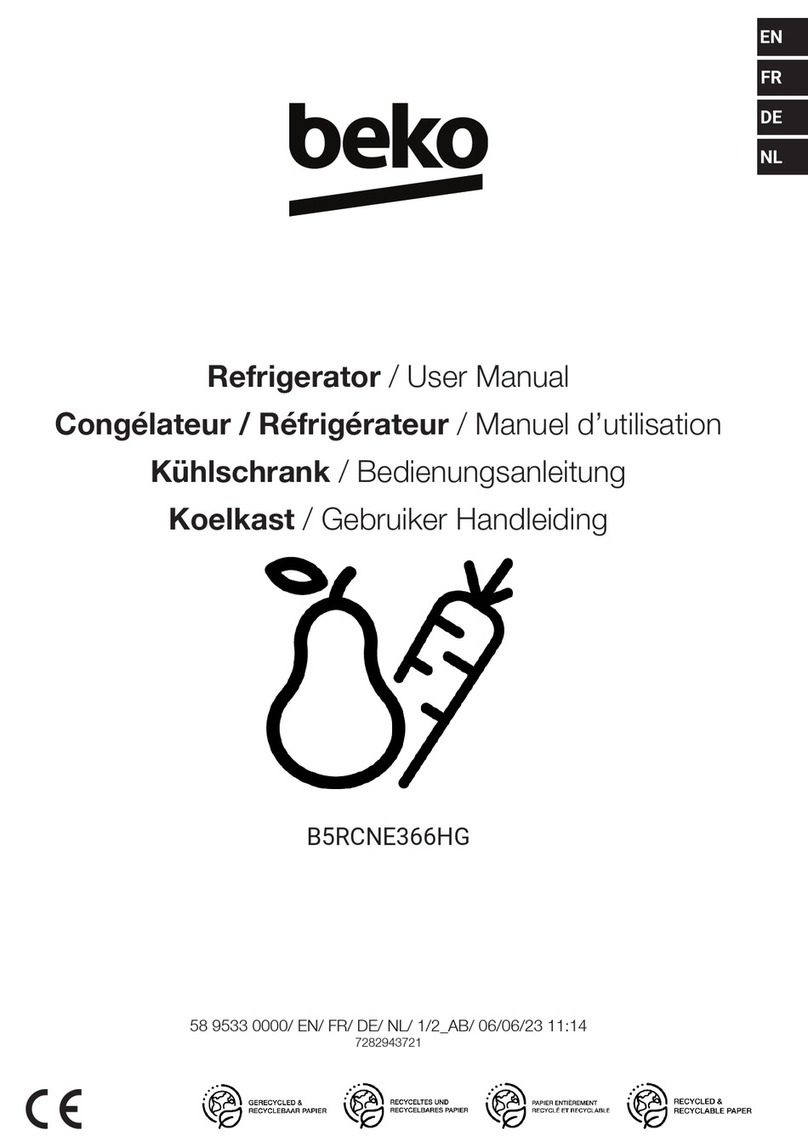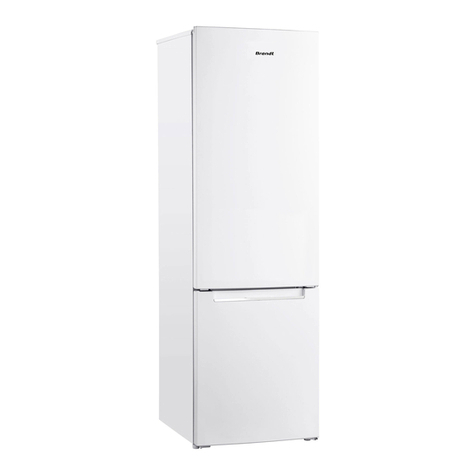6
5. Using the appliance
To start the refrigerator connect the plug to the socket
outlet and switch on the socket. The cooling fins should
show signs of cooling after about 3 hours.
The refrigerator needs about 6 hours at normal
ambient temperature to reach 6 °C in the storage
compartment.
5.1. Temperature regulation
The usual setting required is in the region of 2 to 3 on
the thermostat knob (Fig. 4), but this can vary with
conditions of load and installation. If it is found
necessary to alter the setting,the knob can be turned
to a higher number to produce a colder temperature,
or a lower number to produce a warmer temperature.
The effect of any adjustment can be checked by
means of the thermometer after leaving the
refrigerator operating for a further period to settle
down again.
6. ICE CUBES
Fill the ice tray to 4/5 with drinking water, and place
the ice tray on the ice tray shelf. Wipe off any excess
water to prevent the ice tray from freezing to the
surface.
To speed up the making of ice cubes, turn the
thermostat to position 5 for a short while. Remember
to turn the dial to its normal setting when the ice cubes
are frozen.
To remove the cubes from the ice tray, hold it under
running water. The ice cubes can now be taken out
easily.
7. Useful suggestion
Do not overfill the appliance. It is advisable to
leave some space between the products in the
cabinet to ensure efficient and even cooling. If the
shelves are packed too tightly there may be
unacceptable temperature variations.
8. Defrosting cleaning and
maintenance
Frost will gradually form on the cooling surfaces and it
must not be allowed to become too thick since it acts
as an insulator and interferes with the cooling.
This frost formation is kept back by the FUZZY
LOGIC system built into the appliance by switching
off the unit for two hours in every 24 hours. The
frost will melt and the defrost water will run through
the drain tube from the drip channel into an
evaporating vessel located at the bottom rear of the
refrigerator. (Fig 5) The defrost water will evaporate
automatically into the circulating air and the vessel
will not need emptying manually.
If we want to switch off the unit, turn the thermostat
knob to "0", disconnect the refrigerator from the
electricity supply and leave the cabinet door open.
After defrosting the cabinet interior should be
wiped out with a clean, damp cloth.
9. Changing the lightbulb (If available)
If the lightbulb needs changing, pull out the plug
and proceed as follows:
Press the metal reflector to one side and draw the
lamp covering backwards. Replace the bulb and
push the covering back into place.
A new 10 watt bulb can be obtained at any service
shop.
10. Reversing the door hang
10.1. Reversing the door hang Fig. 6
Lay the appliance on its back. Remove the 8
screws (1). Remove the door, together with the two
hinges (2), from the housing.
Remove the two cover caps (3) from the housing
and place them in the open hinge holes in the
housing. Place the bottom righthand hinge in the
top left of the door and the top righthand hinge in
the bottom left of the door and hang the door on its
hinges in the open cover cap holes in the housing.
Secure the hinges and cover caps with the 8
screws.
Figure 4.
Figure 5.
GB
Figure 6.
